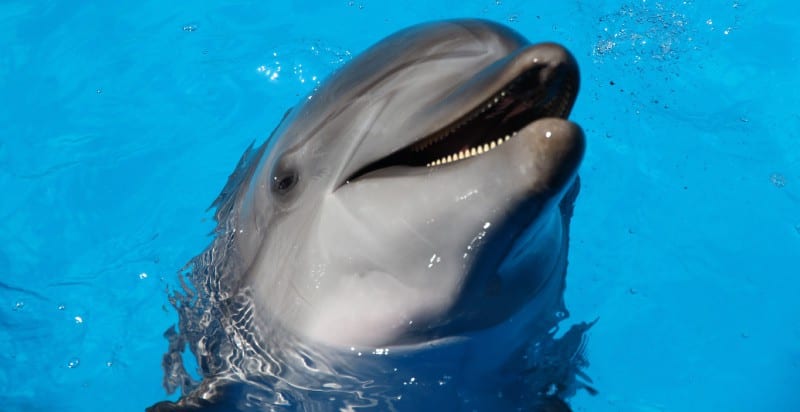

Surprisingly, dolphins are the only mammals on earth to give birth tail first, instead of the head and that they don’t drown during the birthing process.

There are many instances where dolphins helped humans and even whales.įact 9: Dolphins give birth to just one calfįemale dolphins called cows give birth to just one calf and carry their babies for nine to 17 months, depending on their species before giving birth to a calf. They are compassionate to other species also, they extend help crossing the species-barrier. They care for their injured, old, and sick members and help the wounded to reach the surface to breathe. It’s dolphin’s teeth that pick up the echoes, and not ears.ĭolphins are altruistic animals. Dolphins listen to the echoes and judge their location and determine the size and shape of nearby objects they can even distinguish between a golf ball and a ping pong ball hitting the water.Īn organ called “melon” in a dolphin’s head is responsible for echolocation.
#Dolphin teeth series
They make a series of high-pitched clicks that bounce off the distant objects and create an echo. They use echolocation (like bats) to find food, navigate in water and evade predators. The other chambers store food before its digestion.įact 7: Dolphins’ useful tool- echolocationĭolphins identify things from hundreds of yards away because of their natural sonar ability, called echolocation. Since they forgo chewing, digestion occurs in one of the chambers of their stomach or part of their abdomen. These carnivores are predators and eat an average of 33 pounds of fish per day, so their stomachs are designed for rapid digestion. Instead, dolphins use teeth only to catch their prey, such as fish, crustaceans, and squid, and grab the prey until they swallow it whole.

The smallest of their kind is very rare Maui’s dolphin or popoto, which is 3-4 feet long, while the largest killer whale (also called Orca) is 30 feet, ten times longer than the smallest dolphins! World’s largest dolphin is known by the name Boto.ĭolphins have 100 teeth! But they never chew food using their teeth. The most common is the Bottlenose dolphin. Dolphins’ physical attributes and behavior can vary considerably as per their species. There are around 44 different species of dolphins. READ: African Wild Dog: Facts and Information (Related Questions)įact 4: Dolphin species are as many as 44
#Dolphin teeth full
Therefore, dolphins can continue swimming, breathing without drowning (it only takes a spoon full of water in their lungs to drown them), and remain safe from predators 24/7 while napping. They take these kinds of “naps” several times each day. Instead of sleeping at a time for several hours, they rest one hemisphere of their brain for 15 to 20 mins at a stretch, while the other part of their brain remains alert and awake. However, dolphins have a poor sense of smell.ĭolphins are champion in taking power naps. They can even swim at speeds of 25 miles per hour (typically average about 7 or 8 miles per hour) if they want. Some dolphins can hold breath up to 30 minutes, and they have been recorded to dive to 1000 feet (usually they spend almost their entire lives in shallow waters). Their hearing power is ten times better than any humans. It is beneficial in observing their surroundings, especially when they face danger. But captivity shortens a dolphin’s lifespan.ĭolphins can move their eyes separately from each other. Living in the wild and depending on species, dolphins can live 40-70 years because of their excellent hunting and survival skills.
#Dolphin teeth how to
Fact 19: They teach babies how to use tools.

#Dolphin teeth skin


 0 kommentar(er)
0 kommentar(er)
